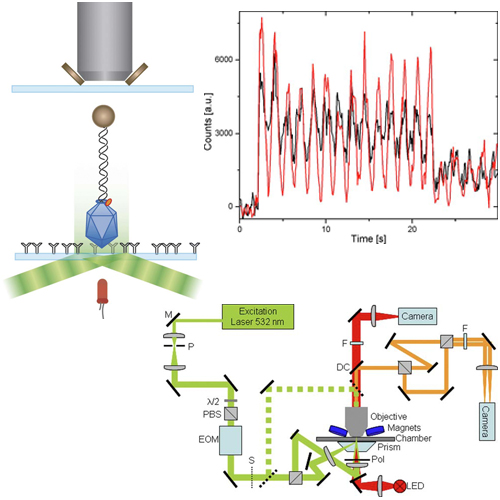Experimental Test of Connector Rotation during DNA Packaging into Bacteriophage Phi29 Capsids
20-Feb-2007
PLOS Biology, 2007, 5, 558-67 (pdf) published on 20.02.2007
www.plosbiology.org, online article
The bacteriophage Phi29 uses a molecular motor to drive its genome into a preformed protein capsid. The central part of this molecular motor is formed by a ring of twelve proteins called the connector. Symmetry and structural arguments have let to the so called rotation hypothesis, i.e. a rotation of the connector is used to drive the DNA into the capsid, which for the last 30 years has been the most prominent model for the function of this motor. We have tested this hypothesis using single-molecule fluorescence polarisation and could show, that the connector does not rotate during packaging. Therefore a new model for motor function had to be developed. This manuscript was highlighted by the editorial team of PLOS Biology in this Commentary: Does Bacteriophage Phi29 Package its DNA with a twist?











